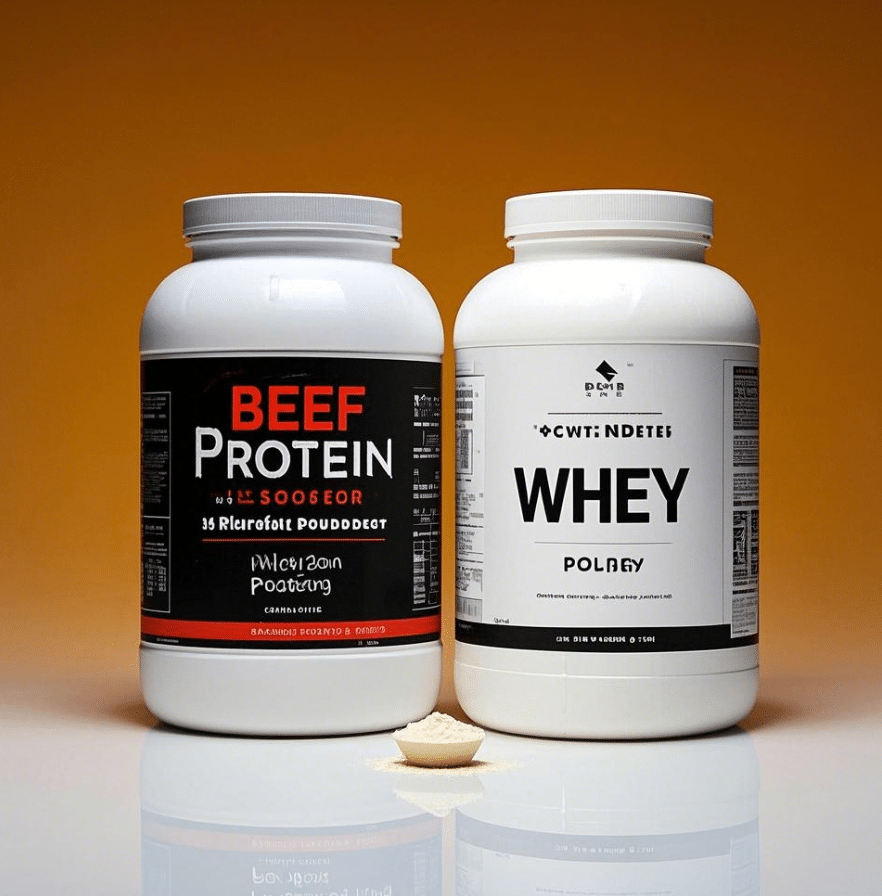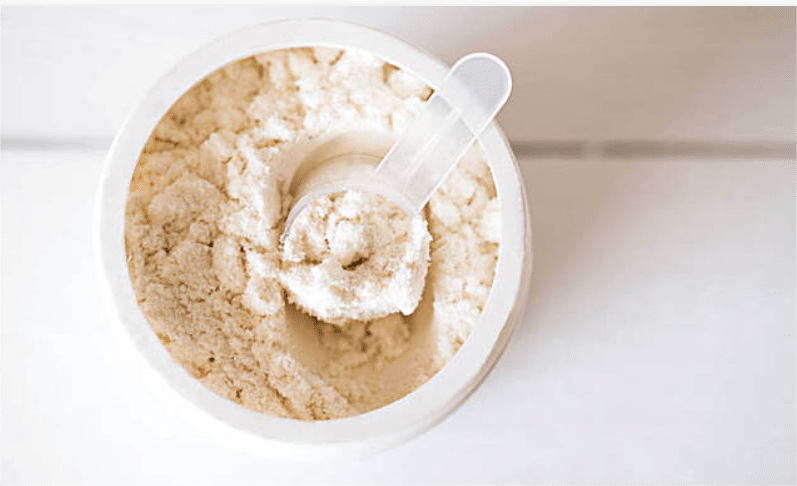Beef Protein Isolate vs Whey: A Comprehensive Analysis for B2B Decision-Makers
When it comes to protein sourcing for nutritional products, businesses face a multitude of options. Among these, beef protein isolate and whey protein stand out due to their unique benefits, market applications, and production processes. This article aims to provide a thorough comparison of beef protein isolate vs. whey, exploring their efficacy, safety, production techniques, and market trends. Our goal is to equip B2B stakeholders, from product developers to procurement teams, with the knowledge necessary for informed sourcing decisions.
Basic Information: What Are They?
Beef Protein Isolate
- Aliases: Beef isolate protein, beef protein isolate powder.
- Latin Name: Bos taurus (for cattle).
- CAS Number: 9010-10-0.
- Appearance: Typically a fine, light brown powder.
- Taste: Mild, slightly meaty flavor that may require flavor masking in some formulations.
- Production Solvents: Water, during the extraction process to isolate the protein.
- Common Specifications: Usually contains around 90-95% protein by weight.
- HS Code: 2106.90 (food preparations not elsewhere classified).
- Shelf Life: Approximately 2 years when stored in a cool, dry place.
- Storage Conditions: Must be kept in a sealed container away from moisture and light.
- Packaging Sizes: Commonly available in 1 kg, 5 kg, or bulk options.
Whey Protein
- Aliases: Whey protein concentrate, whey protein isolate.
- Latin Name: Derived from cow’s milk, no specific Latin name.
- CAS Number: 9041-03-4.
- Appearance: White to off-white powder.
- Taste: Creamy and slightly sweet flavor, which is generally more palatable.
- Production Solvents: Water is primarily used for reconstitution and during the ultrafiltration process.
- Common Specifications: Ranges from 70-80% protein in concentrates and 90% or higher in isolates.
- HS Code: 3504.00 (protein substances).
- Shelf Life: Generally ranges from 18 months to 2 years.
- Storage Conditions: Store in a cool, dry place; packaging must be airtight.
- Packaging Sizes: Available in similar quantities to beef protein.
Historical Context
Beef Protein Isolate Beef protein isolate has gained traction in the market over the past two decades, largely due to rising consumer interest in alternative protein sources, particularly from animal sources that are not dairy-based. Initial research focused on the health benefits of animal proteins and their roles in muscle synthesis.
Whey Protein Whey protein has been widely recognized since the 1980s, spearheaded by an increase in bodybuilder and athlete nutrition trends. Extensive research has validated its efficacy for muscle recovery and growth, making it a staple in fitness and health products.
Common Forms in the Market
Both beef protein isolate and whey protein predominantly appear in powder form, making them suitable for various applications. They can be incorporated into shakes, bars, and other dietary supplements. Whey protein tends to feature a more extensive variety of formulations, including flavored options that are often more appealing to consumers.
Auxiliary Ingredients Used in Production
In the production of both proteins, several auxiliary materials are commonly used:
- Beef Protein Isolate: May include flavoring agents and stabilizers, such as maltodextrin, to improve taste and mixability.
- Whey Protein: Often combined with lecithin (an emulsifier) to enhance solubility and prevent clumping.
Solubility Characteristics
Water Solubility
- Beef Protein Isolate: Generally soluble, but solubility can vary depending on processing methods. Higher processing yields better solubility.
- Whey Protein: Rapidly soluble in water, which makes it highly versatile for protein shakes and other beverage formulations.
Primary Applications in the Market
Both proteins find various applications across health and wellness markets:
- Beef Protein Isolate: Gaining popularity in the fitness community, particularly among those with dairy allergies or intolerances. It’s often marketed for muscle building and recovery.
- Whey Protein: Ubiquitous in the wellness industry, used in protein shakes, sports drinks, and supplemental bars. It appeals to a broader audience due to its taste and versatility.
Key Production Processes
- Beef Protein Isolate:Extraction Method: Typically involves hydrolysis, where collagen and other proteins are broken down to isolate the beef protein.Concentration: The resulting product undergoes filtration to concentrate the protein and remove fats and carbohydrates.
- Whey Protein:Ultrafiltration: A common method where whey is separated from milk during cheese production.Concentration and Drying: The whey is then concentrated, pasteurized, and spray-dried to create the final powder.
Both processes impact the overall cost, quality, and application possibilities of the proteins.
Health Benefits and Effects
Beef Protein Isolate:
- High in essential amino acids, particularly great for muscle recovery.
- Contains vitamins B12 and iron, which can be advantageous for individuals with dietary restrictions.
Whey Protein:
- Rapidly digested and absorbed, making it ideal immediately post-workout.
- Contains bioactive peptides that may promote an immune response and support gut health.
Potential Side Effects
Both proteins come with their own set of considerations:
- Beef Protein Isolate Side Effects: Some individuals may experience gastrointestinal discomfort, particularly if they have sensitivities to beef products.
- Whey Protein Side Effects: Common issues include bloating or digestive upset, especially in individuals with lactose intolerance. Choosing whey isolate over concentrate can mitigate these issues due to the lower lactose content.
Mechanisms of Action in the Body
Both beef protein isolate and whey protein function through similar mechanisms in the body:
- They provide amino acids necessary for muscle protein synthesis.
- The bioactive components can assist in anabolic signaling pathways, promoting muscle recovery and growth.
Detection Methods for Quality Assurance
For both types of protein, quality control testing is vital:
- Beef Protein Isolate: Techniques may include titration for protein content and microbacterial testing for safety standards.
- Whey Protein: Common methods include assessing protein content using Kjeldahl or Dumas methods and checking for contaminants or additives.
Popular Formulations in the Market
Consumers can find both proteins in several formulations:
- Beef Protein Isolate: Often simplified to a pure protein powder, sometimes fortified with vitamins.
- Whey Protein: Available in various flavors, concentrations (concentrate vs. isolate), and blended with other ingredients like creatine or BCAAs to enhance athletic performance.
Recommended Dosages
Typical recommended servings for users are as follows:
- Beef Protein Isolate: About 20-30 grams per serving, often taken post-workout.
- Whey Protein: Similar recommendations of 20-30 grams, but some individuals may take up to 40 grams for advanced training purposes.
Time to See Results
- Beef Protein Isolate: Users may notice benefits in muscle tone and recovery within 4-6 weeks of regular consumption.
- Whey Protein: Many users experience quicker results, often within 2-4 weeks, particularly with muscle recovery following workouts.
Comparable Products
If considering alternatives to both beef protein isolate and whey, examples include:
- Egg Protein: A complete protein with a favorable amino acid profile, great for those seeking dairy-free options.
- Pea Protein: A plant-based choice providing a suitable alternative for vegans and those with allergies.
Clinical Research Developments
Recent studies have reiterated the benefits of both protein sources:
- Research on beef protein isolate continues to explore its efficacy in muscle maintenance and recovery, particularly in populations with dietary restrictions.
- Whey protein remains the subject of extensive studies focused on its impact on weight management and metabolic health.
Regulatory Landscape
The regulations governing these proteins differ internationally:
- United States: Both protein types are regulated as dietary supplements, with specific guidelines for labeling and safety testing.
- European Union: Similar classifications apply, but with stricter requirements regarding health claims and product efficacy.
- Other regions, such as Canada and Australia, follow local regulations that guide food safety and product claims, which businesses must adhere to for compliance.
Market Prospects
The market for both beef protein isolate and whey protein is on an upward trajectory. Key factors driving growth include:
- Regional Demand: North America and Europe represent significant markets, while Asia-Pacific is increasingly adopting protein supplements due to growing health consciousness.
- Sales Projections: Both protein markets are poised for growth over the next five years, potentially reflecting a CAGR of over 6%, fueled by increasing interest in fitness and nutrition.
Advantages and Disadvantages
| Advantages | Disadvantages |
|---|---|
| Beef Protein Isolate | |
| High protein content | Can have a strong flavor |
| Suitable for dairy-free diets | Potential allergens |
| Contains essential nutrients | May cause GI distress for some |
| Good for muscle recovery | Limited flavor options |
| Whey Protein | |
| Rapid absorption | Lactose may cause discomfort for some |
| Tasty and versatile | Not suitable for vegans/vegetarians |
| Widely trusted and researched | Higher cost in some markets |
| Bioactive compounds enhance recovery |
Tips for Choosing Suppliers of Beef Protein Isolate vs. Whey Protein
When selecting suppliers, consider these tips:
- Quality Certifications: Demand certifications like ISO, HALAL, and KOSHER to ensure product integrity.
- Sourcing Transparency: Choose suppliers that openly share their sourcing and production practices.
- Customer Support: Look for suppliers who offer robust after-sales support and guidance on formulations.
Conclusion
Which works better of Beef Protein Isolate and Whey Protein?
Are Beef Protein Isolate and Whey Protein equally effective for muscle building?
Are Beef Protein Isolate and Whey Protein similarly priced?
Are Beef Protein Isolate and Whey Protein both effective for post-workout recovery?
Are Beef Protein Isolate and Whey Protein equally beneficial for weight management?
Are Beef Protein Isolate and Whey Protein both suitable for lactose-intolerant individuals?
Are Beef Protein Isolate and Whey Protein equally effective for improving athletic performance?
Are Beef Protein Isolate and Whey Protein both easily absorbed by the body?
Are Beef Protein Isolate and Whey Protein equally effective for providing essential amino acids?
Are Beef Protein Isolate and Whey Protein both suitable for individuals with dairy allergies?
Are Beef Protein Isolate and Whey Protein equally beneficial for overall protein supplementation in a balanced diet?
In summary, the choice between beef protein isolate and whey protein ultimately depends on individual business needs while considering factors like audience, application, and dietary restrictions. Both protein sources have their distinct advantages, market applications, and growth potential. For companies looking to procure either protein, it’s critical to conduct thorough assessments based on this comprehensive analysis.
For reliable sourcing of high-quality beef protein isolate and whey protein, please reach out to us at sales@collagensei.com. At Gensei Global Industries, we pride ourselves on offering FDA-certified raw materials with extensive documentation and a solid supply chain network. Whether you need protein for dietary supplements, bars, or shakes, we have a diverse portfolio ready to meet your production requirements, supported by our dedicated OEM and ODM services.
Navigating the world of proteins can feel overwhelming, but informed decisions today pave the way for success tomorrow, ensuring you meet the demands of the growing market while providing quality products to your customers.




